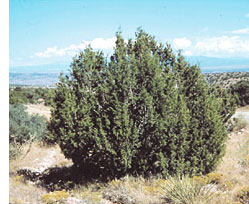Heatwaves can make trees
pollute
May 10,2004
High temperatures will change
their behaviour
Trees are supposed to be one of nature's greatest defences against
pollution, but new data suggests they can sometimes have the opposite
effect.
Conventional wisdom holds that plants will purify the air, helping to reduce
concentrations of harmful gases.
But experts at York University now say this effect can reverse itself in the
UK during extremely hot conditions.
When temperatures exceed a threshold, trees and other plants emit chemicals
that encourage toxic ozone production.
As the temperature increases, the emission rate increases almost
exponentially
Dr Alastair Lewis, York University
The discovery was made when the team measured ozone levels in Chelmsford,
Essex, during two weeks of last year's summer heatwave.
When temperatures rose above about 35C, deciduous trees began emitting
greatly increased amounts of the compound isoprene. This is usually produced
only in relatively small amounts.
"At 25C, the amount of [isoprene] emissions from the average UK deciduous
tree is pretty low. But as the temperature increases, the emission rate
increases almost exponentially," York team leader Dr Alastair Lewis told BBC
News Online.

"At 30C, it's starting to become important. By 35C, the emission rate has
gone up by maybe an order of magnitude (10 times)."
Dangerous levels?
Isoprene takes part in reactions that convert nitrogen oxide from car
exhaust emissions into ozone.
The more isoprene there is, the more ozone is produced from smaller amounts
of nitrogen oxide.
"This phenomenon has been seen before in California and the Mediterranean
but, of course, we hardly ever get temperatures like that in the UK and
northern Europe," Dr Lewis explained.
"Last summer, of course, we had very high temperatures and in the future
extreme heatwaves are expected to be more frequent."
Evergreen trees also produce terpenes, which have similar but lesser effects
to isoprene.
Dr Lewis said they found evidence the increased isoprene and terpene levels
were contributing 30% to ozone levels at the height of the heatwave.
Ozone is particularly dangerous for children, the elderly and asthmatics.
European laws dictate that governments need to warn the public when hourly
concentrations of ozone rise above 180 microgrammes per cubic metre. On 6
August 2003, ozone levels in London rose to 300.
But Professor David Fowler, director of biogeochemical cycles at the Centre
for Ecology and Hydrology in Edinburgh, told the Daily Telegraph on Monday
that most of the literature on health effects of ozone came from North
American studies.
"Basically, we are getting to where America was 20 to 30 years ago," he
said.
"I think the more worrying thing is that whereas in Europe we are now good
at controlling the peaks of ozone production in hot summers, the background
levels have been steadily rising.
"We could be looking at planting trees that produce little or no isoprene or
terpene, but realistically the best way to counter this is to reduce our
production of both ozone and nitrogen oxides from industrial and personal
processes."